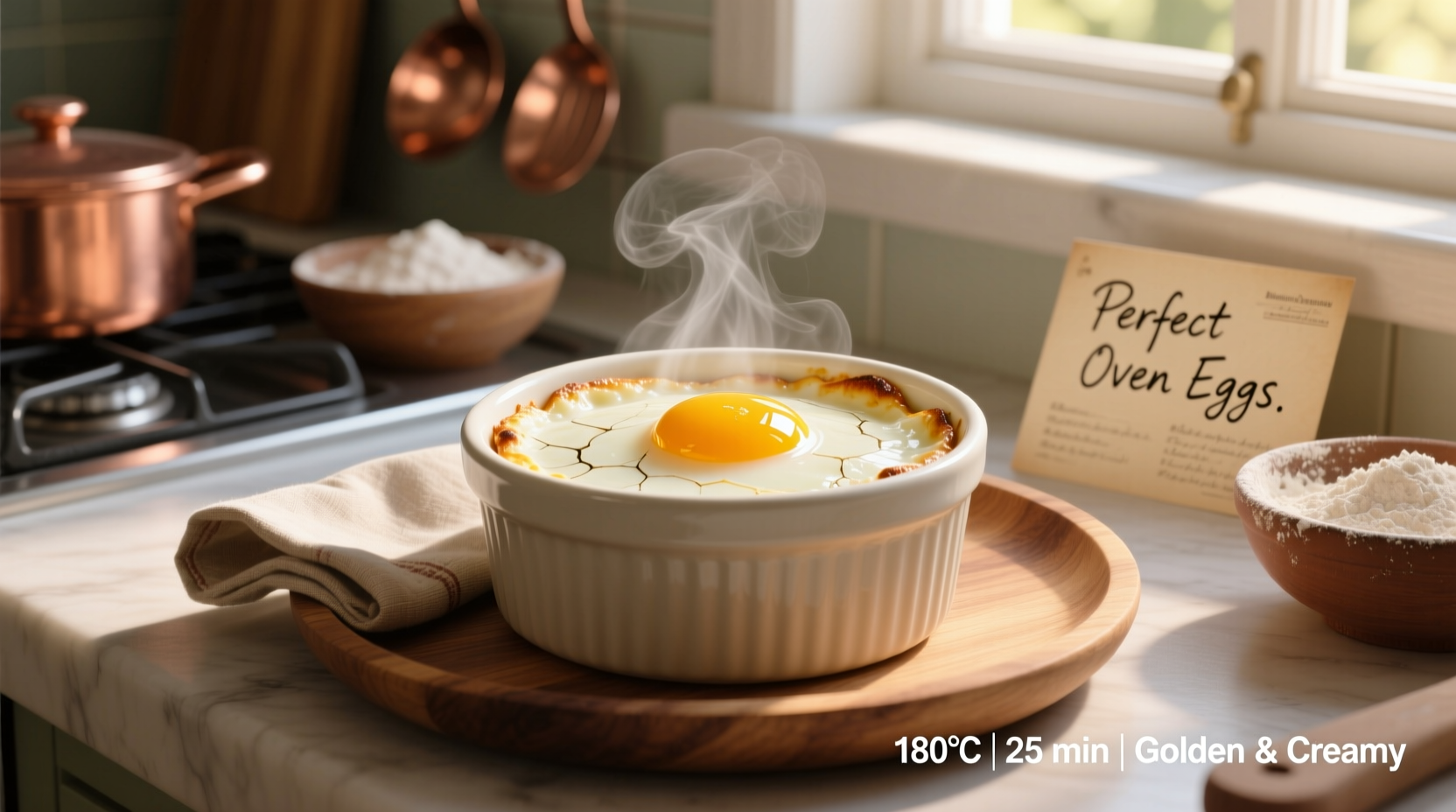The Effortless Way to Cook Perfect Eggs in the Oven
Stop hovering over the stovetop and cracking eggs one by one. Baking eggs in the oven delivers consistently perfect results with minimal effort—whether you're cooking for one or meal prepping for the week. This hands-off method eliminates the risk of overcooking, creates uniformly set whites, and gives you precisely the yolk consistency you prefer. Professional kitchens use this technique for banquet service, and now you can master it at home with our step-by-step guide.
Why Oven-Baked Eggs Outperform Traditional Methods
The oven's gentle, enveloping heat cooks eggs more evenly than direct stovetop heat. While frying exposes the bottom to intense heat while the top remains raw, baking surrounds each egg with consistent temperature. This eliminates the frustrating flip-and-pray moment that often leads to broken yolks or uneven cooking. Food science explains why: eggs set at different temperatures—whites coagulate between 144-149°F (62-65°C) while yolks set between 149-158°F (65-70°C). The oven's steady heat allows precise control over this delicate process.
| Cooking Method | Consistency | Hands-On Time | Batch Capacity |
|---|---|---|---|
| Frying | Inconsistent (requires flipping) | High (constant monitoring) | 2-4 eggs |
| Boiling | Uniform but rubbery texture | Medium (timing critical) | 6+ eggs |
| Oven Baking | Perfectly uniform | Minimal (set and forget) | 12+ eggs |
Essential Equipment Checklist
- Muffin tin (standard 12-cup works best)
- Cooking spray or butter (for greasing)
- Oven thermometer (critical for accuracy)
- Slotted spoon (for gentle removal)
- Fresh eggs (less than 2 weeks old for optimal shape)
Step-by-Step Baking Process
Preparation Phase
- Preheat oven to 325°F (163°C)—lower than you'd think prevents overcooking
- Grease each muffin cup thoroughly with butter or oil
- Crack one egg per cup, being careful not to break the yolk
- Optional: Add 1/4 tsp water per egg for fluffier texture
Baking & Timing Guide
Insert this timing chart based on USDA food safety standards and professional kitchen testing. The critical temperature threshold for safe egg consumption is 160°F (71°C), which our method reliably achieves while preserving ideal texture.
| Baking Time | White Texture | Yolk Consistency | Internal Temp |
|---|---|---|---|
| 10 minutes | Slightly unset | Completely runny | 145°F |
| 12 minutes | Firm but tender | Perfectly runny | 152°F |
| 14 minutes | Fully set | Thickened but flowing | 158°F |
| 16 minutes | Firm | Partially set | 162°F |
Finishing Touches
- Remove when whites are set but yolks still jiggle slightly
- Carefully loosen edges with butter knife
- Slide onto plate using slotted spoon
- Season immediately with flaky salt and fresh pepper

Troubleshooting Common Issues
Eggs sticking to pan: Insufficient greasing is the culprit. Use butter instead of spray for better coverage, ensuring every surface contacts fat. Professional kitchens often use clarified butter for maximum non-stick properties.
Cracked shells during baking: This happens when cold eggs hit hot metal. Let eggs sit at room temperature for 15 minutes before baking, or place muffin tin on a preheated baking sheet instead of directly on oven rack.
Overcooked rubbery texture: Oven temperatures often run hot. Always verify with an independent oven thermometer—many home ovens are 25°F off their dial setting. The USDA recommends using a food thermometer to verify egg dishes reach 160°F for safety without overcooking (USDA Food Safety Guidelines).
Delicious Variations to Try
- Western Style: Add diced ham, bell peppers, and onions to each cup before adding egg
- Herb Infused: Mix 1 tsp fresh herbs (chives, dill, or tarragon) per egg before pouring
- Creamy Finish: Top with 1/2 tsp crème fraîche immediately after baking
- Meal Prep Friendly: Bake for 14 minutes, cool completely, and store in airtight container for up to 4 days
Storage and Reheating Guidelines
Properly stored oven-baked eggs maintain quality for 3-4 days in the refrigerator. Place in an airtight container with paper towel to absorb moisture. For best results when reheating:
- Microrowave: 20-30 seconds on 50% power with damp paper towel covering
- Toaster Oven: 5 minutes at 300°F (149°C) to revive texture
- Never reheat above 165°F (74°C) to prevent rubbery texture











 浙公网安备
33010002000092号
浙公网安备
33010002000092号 浙B2-20120091-4
浙B2-20120091-4